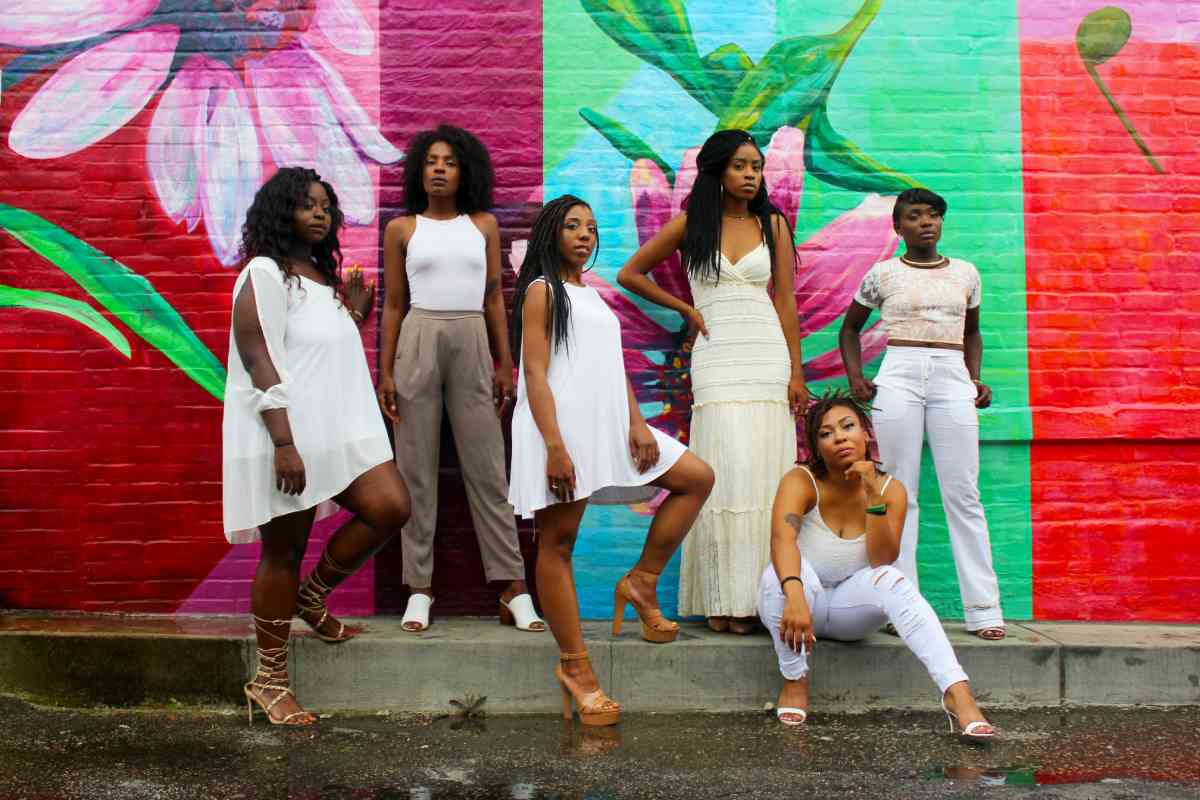In the world of fashion, the threads of cultural diversity are woven into a global tapestry that reflects our interconnected society. The digital age, with its plethora of platforms and major fashion events, has played a crucial role in making diverse fashion trends accessible to a worldwide audience. This has fostered a unique blend of cultural expressions in fashion that span the globe. Observing how fashion serves as a mirror, reflecting the cultural diversity and interconnectedness of our world, is a fascinating journey.
Table of Contents
Historical Milestones in Fashion
The history of fashion is marked by significant milestones that have profoundly influenced its evolution. The Japanese kimono, for example, left an indelible mark on Western fashion, inspiring a wave of Japonism in the late 19th century. Its elegant simplicity and unique aesthetic introduced elements of Japanese design into Western clothing, showcasing the power of cultural exchange in fashion. Similarly, the post-WWII era witnessed the emergence of Dior’s ‘New Look’, which revolutionised women’s fashion with its emphasis on femininity and luxury. This pivotal moment set a new standard for elegance, reshaping fashion in the years to follow.
These historical events are not just footnotes in fashion’s story; they are chapters that have integrated cultural elements into mainstream fashion, setting the stage for future trends. They underscore how fashion, at its essence, is a reflection of cultural shifts and societal changes, embodying the spirit of its time while pushing the boundaries of creativity and innovation.
The Met Gala’s Cultural Showcase
The Met Gala, hosted by The Metropolitan Museum of Art, stands as a testament to the global impact of cultural influences on fashion. Through themes like ‘China: Through the Looking Glass’, the Gala not only showcases but also influences global fashion trends by celebrating diverse cultural aesthetics. It’s a platform where fashion intersects with art, history, and culture, offering a glimpse into the myriad ways in which cultural heritage can inspire contemporary fashion.
The Met Gala encourages designers to explore and integrate cultural elements into their creations, fostering a deeper appreciation and understanding of global cultures. This celebration of cultural diversity through fashion serves as a powerful reminder of our world’s interconnectedness, highlighting fashion’s role as a universal language that transcends geographical and cultural boundaries.
Seoul Fashion Week’s Global Influence
Seoul Fashion Week has become a pivotal platform for showcasing the innovative designs and unique aesthetics of South Korean designers, significantly influencing global fashion trends. This event has not only put South Korean fashion on the map but has also introduced the world to the dynamic and creative spirit of K-fashion. Designers from Seoul are celebrated for their ability to blend traditional elements with cutting-edge trends, creating distinctive styles that resonate with a global audience.
The influence of Seoul Fashion Week extends beyond the runway, shaping fashion trends and consumer preferences worldwide. It underscores the growing importance of cultural diversity in fashion, showcasing how traditional and contemporary elements can coexist and enrich the global fashion landscape.

Revival of Traditional Fabrics and Techniques
There has been a resurgence of interest in traditional fabrics and techniques, as designers seek to incorporate indigenous textiles and craftsmanship into their collections. This revival is not just about bringing old traditions back to life; it’s about reinterpreting them in a contemporary context, creating fashion that is both innovative and deeply rooted in cultural heritage. By doing so, designers are preserving cultural identities while pushing the boundaries of fashion design.
This trend towards incorporating traditional elements into contemporary fashion reflects a growing appreciation for the craftsmanship, history, and stories embedded in traditional textiles and techniques. It offers a rich source of inspiration for designers looking to create meaningful and authentic fashion, showcasing the enduring appeal and value of cultural heritage in the fashion industry.
Fashion at the Crossroads of Sustainability
The intersection of cultural preservation and sustainability in fashion is becoming increasingly important. Brands and designers leverage traditional methods and materials to offer eco-friendly fashion solutions, contributing to a more sustainable industry while preserving cultural heritage. This approach ensures that traditional skills and knowledge are passed down through generations, marrying the goals of environmental sustainability with the preservation of cultural diversity.
By embracing sustainability, the fashion industry can mitigate its environmental impact while celebrating and preserving cultural diversity. This dual focus is reshaping the industry, encouraging a move towards more responsible and mindful fashion practices that honour both the planet and its diverse cultures.
Cultural Curation in Luxury Fashion
Cosette, a retailer based in Sydney, Australia, exemplifies how luxury fashion can encompass a wide range of cultural influences. By curating a diverse selection of luxury items, Cosette reflects broader cultural trends in its offerings, providing customers with access to fashion that is both luxurious and culturally rich. This approach not only caters to the growing consumer appetite for culturally inspired fashion but also highlights the role of retailers in bridging cultures through fashion.
Cosette’s mission to make luxury more affordable and accessible aligns with the growing demand for fashion that is not only stylish but also meaningful and reflective of cultural diversity. Offering a curated selection of luxury items from leading brands, Cosette is at the forefront of a movement that values cultural diversity and inclusivity in the luxury fashion sector.
The Digital Runway and Social Media
Social media platforms have transformed into digital runways, showcasing and democratising fashion trends influenced by different cultures. These platforms allow designers, brands, and individuals to share their creations with a global audience, bringing cultural fashion elements to the forefront. Viral trends on social media often highlight the rich tapestry of cultural influences in fashion, making it more accessible and relatable to people around the world.
Social media not only amplifies instances of cultural appropriation but also serves as a platform for cultural education and awareness. As Lewis Chumo points out, recent studies have “highlighted the role of social media in both amplifying instances of cultural appropriation and serving as a platform for cultural education and awareness.” This dual role underscores the complex impact of digital platforms on cultural fashion, offering opportunities for greater understanding and appreciation of cultural diversity.
Consumer Demand for Culturally Inspired Fashion
The growing demand for culturally inspired fashion items is influenced by a desire for authenticity and storytelling in fashion. Consumers are increasingly seeking out fashion that tells a story, that connects them to different cultures and traditions in a meaningful way. This trend is shaping the offerings of fashion retailers and brands, who are responding to this demand by incorporating cultural elements into their designs.
This shift towards culturally inspired fashion reflects a broader desire for deeper connections and understanding in our globalised world. It’s a movement towards fashion that celebrates diversity, embraces cultural heritage, and fosters a sense of global community.
Fashion’s Cultural Future
As we look to the future, the relationship between culture and fashion is expected to continue evolving, with cultural influences playing a pivotal role in shaping future fashion trends. This ongoing dialogue between fashion and culture offers endless possibilities for creativity, innovation, and expression, inviting us to consider our own engagement with culturally inspired fashion.
The future of fashion lies in its ability to embrace and celebrate cultural diversity, to weave together the threads of different cultures into a vibrant and inclusive tapestry. As we move forward, the fashion industry has the opportunity to lead the way in promoting cultural understanding and appreciation, creating a more connected and compassionate world through the universal language of fashion.

